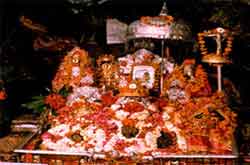Temples & Shrines of Kashmir
Kashmir is blessed with some of the famous Temples & Mosques
Shankaracharya Temple: The sacred temple of Shankaracharya occupies the top of the hill known as Shankaracharya Hills in the south-east of Srinagar. 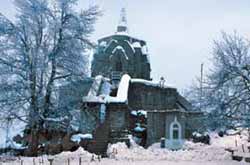 The site dates back to 250BC. The Saint Shankaracharya stayed at this place when he visited Kashmir ten centuries ago to revive Sanatan Dharma.
The site dates back to 250BC. The Saint Shankaracharya stayed at this place when he visited Kashmir ten centuries ago to revive Sanatan Dharma.
Before this date, the temple was known as Gopadri, as an earlier edifice on the same site was built by king Lalitaditya in the 6th century AD. In fact, the road below the hill, with residences of high- ranking State Government officials, is still known as Gupkar road.
Built on a high octagonal plinth and approached by a flight of steps with side walls that once bore inscriptions, the main surviving shrine consists of a circular cell. It overlooks the Valley and can be approached by a motorable road. An inscription in Persian within the Temple traces its origin to the reign of Emperor Shah Jehan. The dome- shaped ceiling and the brick roof, it appears, is not more than a century old.
Hari Parbat Fort & Temple of Sharika Devi: The Mughal emperor's fort crowns the top of Hari Parbat hill. There is little left of its former glory, but the ramparts are still impressive and the old apartments within the fort, even though in a state of ruin, still convey at least a little of the grandeur of the Mughals’ summer retreat in ‘paradise’. The fort was later developed in 18th century by an Afghan governor, Ata Mohammad Khan.
The hill is considered sacred to the Hindus due to the presence of temple of Sharika Devi, which is believed to be a form of Goddess Durga. The wall around the hill was built by Akbar in 1592-98 AD. The hill is surrounded by almond orchards, which make a lovely sight during April when the trees blossom, heralding the advent of spring in Kashmir.
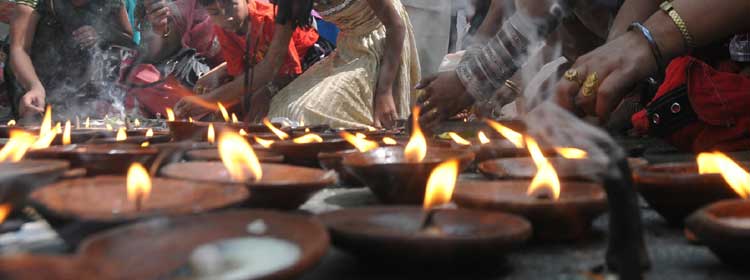
Kheer Bhawani: The Goddess Ragnya Devi is symbolised as a sacred spring at Tula Mula village, 27 kms from Srinagar. Within the spring is a small marble temple. The devotees of the Goddess fast and gather here on the eighth day of the full moon in the month of May when, according to belief, the Goddess changes the colour of the spring's waters. The temple-spring complex is affectionately known as Kheer Bhawani because of the thousands of devotees who offer milk and 'kheer' to the sacred spring, which magically turns black to warn of disaster. According to the legend, there were 360 springs surrounding the main spring but all of these seem to have disappeared as the land has become marshy all around.
Martand: Located atop a plateau, close to the township of Anantnag, has a temple dedicated to Lord Surya, the "Sun God". Built by king Laitaditya Muktapida (7th to 8th century AD), it is a medieval temple with a colonnaded courtyard and the shrine in its centre. The temple complex has 84 columns and offers a commanding view of the valley of Kashmir.
Awantipur: Founded by Avantivarman who reigned Kashmir in the 9th century, this ancient township is 29 kms from Srinagar. The site has two imposing temples, the larger one of Lord Siva - Avantisvara is marked by huge walls, some half a mile beneath the town on the outskirts of village Jaubror. The subsidiary shrines are to the rear corner of the courtyard. The complex has, over the years, lost its grandeur and been reduced to ruins, though it is still visited by the devout. Half a mile up is Avantisvami - Lord Vishnu, a better preserved, though smaller temple.
Jama Masjid: The Jama Masjid at Nowhatta, in the heart of the old city, is the other important mosque in Srinagar at which thousands of people congregate for the Friday prayers. Of imposing proportions, the mosque is built around a courtyard and is supported by 370 wooden pillars. The hushed quiet of the mosque counterpoints the bustle of the old bazaars surrounding it. Originally built by Sultan Sikandar in 1400 AD, and enlarged by his son, Zain-ul- Abidin, it is a typical example of Indo-Saracenic architecture. Destroyed thrice by fire and rebuilt each time, the mosque, as it now stands, was repaired during the reign of Maharaja Pratap Singh.
Hazratbal Mosque: Hazratbal Mosque is located in a village of the same name on the banks of the Dal. 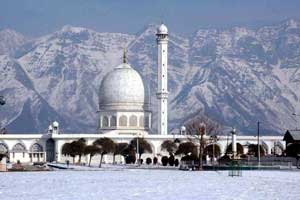 Its pristine white marble elegance is reflected in the waters of the lake. Hazratbal's special significance is derived from the fact that it houses a hair of the prophet Muhammad. This is displayed to the public on religious occasions, usually accompanied by fairs. Apart from these occasions, Friday prayers are offered at Hazratbal and attended by throngs of people. Hazratbal is remarkable for being the only domed mosque in Srinagar; the others having distinct pagoda like roofs. The shrine – mosque complex is situated on the western shore of the Dal Lake opposite Nishat Bagh and commands a grand view of the lake and the mountain beyond.
Its pristine white marble elegance is reflected in the waters of the lake. Hazratbal's special significance is derived from the fact that it houses a hair of the prophet Muhammad. This is displayed to the public on religious occasions, usually accompanied by fairs. Apart from these occasions, Friday prayers are offered at Hazratbal and attended by throngs of people. Hazratbal is remarkable for being the only domed mosque in Srinagar; the others having distinct pagoda like roofs. The shrine – mosque complex is situated on the western shore of the Dal Lake opposite Nishat Bagh and commands a grand view of the lake and the mountain beyond.
Khanqah of Shah Hamadan: Situated on the banks of the river Jhelum, between the third and fourth bridge, it is the first mosque ever built in Srinagar. The original one was built in 1395.
Shah Hamadan's full name was Mir Sayed Ali Hamadni, the surname being derived from the city of Hamadan in Persia. Shah-i-Hamdan, who came from Persia in the 13th century, was responsible for the spread of Islam in Kashmir. Khanqah-i-Mualla, on the banks of the Jhelum, was the very spot where Shah-i-Hamdan used to offer prayers.
After staying in Kashmir for many years, he left for Central Asia via Ladakh. A mosque established by him at Shey (near Leh) attracts devotees from far and wide. 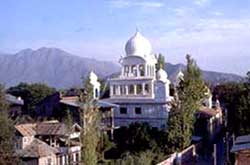 The Khanqah is a wooden structure whose chief aesthetic feature is its beautifully carved eaves and hanging bells. The interiors are richly carved and painted, and the antique chandeliers give it an air of opulence.
The Khanqah is a wooden structure whose chief aesthetic feature is its beautifully carved eaves and hanging bells. The interiors are richly carved and painted, and the antique chandeliers give it an air of opulence.
Chhatti Padshahi Gurudwara: The sixth Sikh guru travelled through Kashmir, stopping to preach occasionally. A gurudwara has been built at the exact site of each of these halts. The most important one among these is Chhatti Padshahi gurudwara, situated near the Kathi Darwaza, in Rainawari, Srinagar, which is held in great reverence by devotees of all faiths.

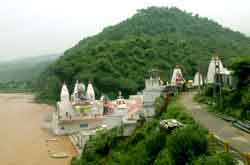
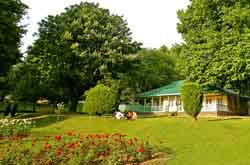
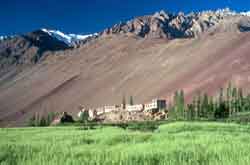

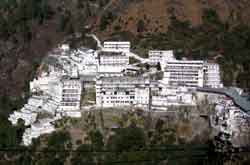
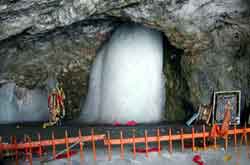
 The site dates back to 250BC. The Saint Shankaracharya stayed at this place when he visited Kashmir ten centuries ago to revive Sanatan Dharma.
The site dates back to 250BC. The Saint Shankaracharya stayed at this place when he visited Kashmir ten centuries ago to revive Sanatan Dharma. 

 The Khanqah is a wooden structure whose chief aesthetic feature is its beautifully carved eaves and hanging bells. The interiors are richly carved and painted, and the antique chandeliers give it an air of opulence.
The Khanqah is a wooden structure whose chief aesthetic feature is its beautifully carved eaves and hanging bells. The interiors are richly carved and painted, and the antique chandeliers give it an air of opulence.